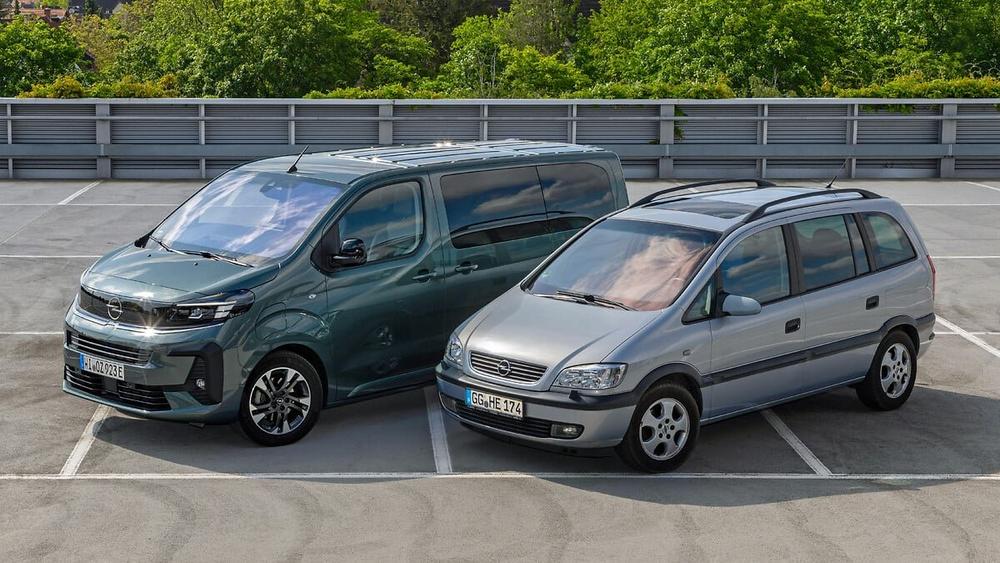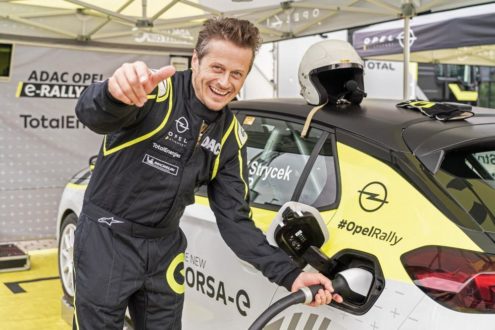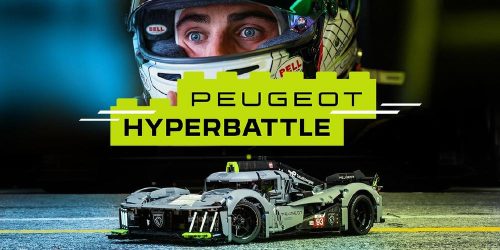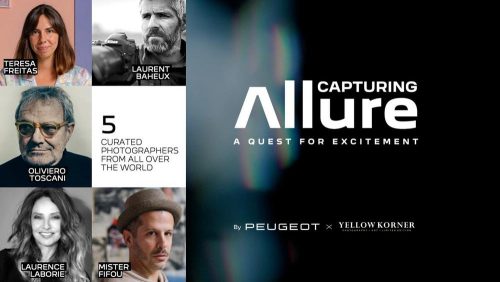
Compact Van Pioneer: The Opel Zafira Celebrated its World Premiere 25 Years Ago
- Revolutionary: Flex7 seat concept set new standards for interior variability in 1999
- Award winning: Zafira receives prestigious “Golden Steering Wheel” several times
- Fuel cell pioneer: Locally emissions-free HydroGen vehicles based on Zafira
- Modern, flexible “spacecraft”: Opel Zafira, Combo and soon new Frontera
Emotional, efficient and, above all, highly practical, with lots of flexible space for the whole family or for use as a VIP shuttle – these are the qualities that make Opel’s people movers stand out. The current Opel Zafira can accommodate up to eight people, while the Combo can carry up to seven passengers. This portfolio will soon be complemented by the new Opel Frontera, which recently celebrated its world premiere in Istanbul and made its public debut in Rüsselsheim to mark the anniversary “125 years of automobile manufacturing at Opel”. The Frontera will also have space for up to seven people as an option.
However, these modern “spacecraft” from the brand with the Blitz would hardly be conceivable without a very special model that is also celebrating an anniversary this year – in 1999, exactly 25 years ago, the groundbreaking Opel Zafira was launched. With its innovative Flex7 seating system, it revolutionised the compact van segment and set new standards for interior variability, for which it subsequently received numerous awards. At the same time, it paved the way for today’s hydrogen fuel cell drive of the Vivaro HYDROGEN and the future Movano HYDROGEN, by serving as the basis for several HydroGen test fleets. The Opel Zafira was a pioneer in numerous respects and brought automotive solutions to the fore that are now taken for granted.
Practical, space-saving, easy: Pioneering Zafira onboard seat system
In the spring of 1999, production of a model that would make history began: the first examples of the new Opel Zafira rolled off the production line. The 4.32 metre long, 1.74 metre wide and 1.68 metre high compact van was designed for lightweight construction. The first generation weighed just 1,390 kilogrammes when it was launched. Efficiency was as important to Opel then as it is today. With a drag coefficient of 0.33, the Zafira offered top aerodynamic performance in its class. With its clear design and long wheelbase, it combined elegance with functionality. The vehicle’s low centre of gravity and the ultra-modern DSA (Dynamic SAfety) chassis ensured driving stability and the best possible safety.
But the Zafira made headlines 25 years ago for another reason: it was the first compact van to offer flexible space for up to seven people without the need to laboriously remove heavy seats. This was made possible by the intelligent, patented Flex7 seating system. With this unique mechanism, Opel set new standards for fully integrated onboard flexibility in the interior. In just around 15 seconds, the compact van could be transformed from a seven-seater into a two-seater with up to 1,700 litres of luggage volume. After unlocking and retracting the headrests, the seats in the third row could be easily folded up and stowed in appropriately shaped recesses in the vehicle floor, creating a completely flat loading area. The annoying removal from the vehicle and storage of temporarily unused seats were now a thing of the past.
The same applied to the second row: it could be folded up, pushed forward and secured behind the front seats to save space. The front passenger seat could also be folded into a horizontal position. This meant that objects up to three meters long could be loaded into the Zafira and four passengers could be accommodated at the same time.
Award-winning concept: Zafira wins “Golden Steering Wheel” three times
Success was not long in coming. In the year of its launch, the trendsetter received the “Golden Steering Wheel” for the first time. This was just a taste of what was to come. With the second generation of the Zafira in 2005, Opel engineers optimised the handling of the second row. The seats could be folded down in a 40:20:40 ratio, so that adults could also sit comfortably on the outer individual seats. The reward for the effort: with the further developed Flex7 seating system, the Zafira B was set another benchmark for interior flexibility – and once again won the “Golden Steering Wheel”.
The Zafira was accompanied by a premium partner in the Zafira Tourer and immediately won another “Golden Steering Wheel”. In addition to the flexible interior, the newcomer impressed with lounge comfort, panorama glass sunroof and innovations such as radar-based speed control and Forward Collision Alert. With this serial success, the Zafira alone, in its various generations, has contributed three times to Opel’s award series at the prestigious “Golden Steering Wheel”.
Zafira for all occasions: From top athlete to locally emissions-free pioneer
In 2001 – two years after the introduction of the first generation Zafira – Opel asked: “Can a sports car have seven seats, or put another way: Can a compact van have sporty driving characteristics?” The Zafira OPC gave a clear answer. It combined two ostensibly different segments: the practical variability of a compact van with the driving characteristics and performance of a sports car. In figures, this means a 141 kW (192 hp) 2.0-litre turbo engine, 250 Newton metres of torque, zero to 100 km/h in 8.2 seconds and a top speed of 220 km/h. This made the Zafira OPC, which was launched in autumn 2001, the fastest van in Europe at the time.
Combining emotions with maximum efficiency – this is the motto that Opel followed then and still follows today. In the same year as the sporty Zafira OPC, a completely different drivetrain also made its debut. In addition to fuel-efficient petrol and diesel engines, the compressed natural gas Zafira 1.6 CNG complemented the portfolio as a particularly economical and resource-saving vehicle. It significantly reduced emissions compared to conventional petrol engines and retained full interior variability thanks to the practical packaging of all components. The gas tanks were installed under the floor and thanks to the “Monovalentplus” concept, the driver could simply switch to petrol operation when required.
The compact van is also a pioneer in locally emissions-free hydrogen fuel cell drive. In 2000, Opel’s fuel-cell development took to the streets with the Zafira-based HydroGen1. Its hydrogen fuel cell supplied electricity for a three-phase asynchronous motor giving 55 kW (75 hp) and 251 Newton metres of torque. A buffer battery covered power peaks. In 2001, a fleet of 20 HydroGen3 models was driven by test customers. Power was increased to 60 kW (82 hp), giving a top speed of 160 km/h. In the 2004 Fuel Cell Marathon, two HydroGen3 vehicles covered nearly 10,000 km across Europe, from Hammerfest in Norway to Lisbon in Portugal. At the wheel of a HydroGen3, F1 and Opel DTM driver Heinz-Harald Frentzen also won the 2005 Monte Carlo Rally for cars with alternative propulsion. The Zafira-based HydroGen vehicles paved the way for today’s Opel Vivaro HYDROGEN van. Soon the range of locally emissions-free commercial vehicles that can be quickly refuelled with hydrogen will be even larger, with the new Opel Movano HYDROGEN.
Space for family, team and colleagues: Opel Zafira, Combo and new Frontera
While the first-generation Zafira from 1999 is considered a pioneer of interior flexibility with space for the whole family, Opel today offers a wide range of spacious vehicles for comfortable shuttle services as well as for relaxed vacation trips. These include the current Zafira with eight seats as well as the Combo with up to seven. And the next multi-seater will follow this year: with the recently presented new Frontera, Opel has for the first time a compact SUV that can carry up to seven people. Spacious and comfortable, focussed on the essentials and electrified in every variant, the Frontera with its characteristic, robust design is the ideal car for outdoor fans and families. The attractive newcomer, which will be available to order shortly, comes with many practical solutions, including an innovative smartphone station and a comfortable Intelli-Seat feature for the front seats. It is available either as a hybrid with 48-volt technology or all-electric. The new Opel Frontera thus offers resource-saving driving pleasure including locally emissions-free operation and continues the brand’s electrification offensive.
Opel Automobile GmbH
Bahnhofsplatz
65423 Rüsselsheim
Telefon: +49 (6142) 7-70
Telefax: +49 (6142) 77-8409
http://de-media.opel.com/de
Telefon: +49 (6142) 6927466
E-Mail: leif.rohwedder@opel-vauxhall.com
Communications, Manager International Product
Telefon: +49 (6142) 69-22084
E-Mail: colin.yong@stellantis.com
Telefon: +49 (6142) 6927811
E-Mail: carina.elsinger@opel-vauxhall.com
![]()




